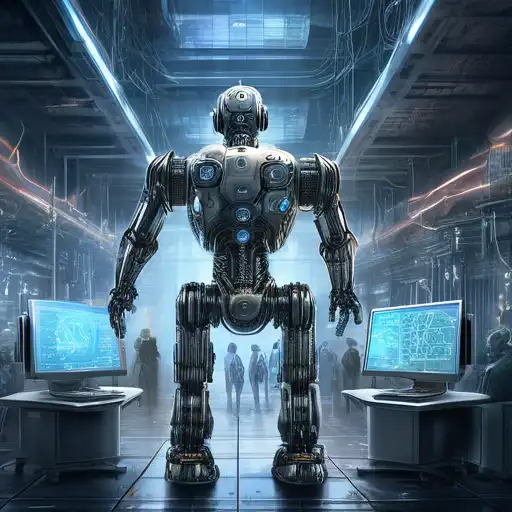Understanding AI and Machine Learning
In the realm of technology, Artificial Intelligence (AI) and Machine Learning (ML) are two of the most talked-about topics. While they are often used interchangeably, they represent distinct concepts with unique applications and implications. This comparative study delves into the nuances of AI and ML, shedding light on their differences, similarities, and how they are shaping the future of technology.
What is Artificial Intelligence?
Artificial Intelligence is a broad field of computer science focused on creating systems capable of performing tasks that typically require human intelligence. These tasks include problem-solving, understanding natural language, recognizing patterns, and making decisions. AI can be categorized into two types: Narrow AI, which is designed for specific tasks, and General AI, which possesses the ability to understand, learn, and apply knowledge in various contexts.
What is Machine Learning?
Machine Learning, a subset of AI, involves the development of algorithms that allow computers to learn from and make predictions or decisions based on data. Unlike traditional programming, where humans explicitly code the behavior, ML systems improve their performance as they are exposed to more data over time. ML is further divided into supervised learning, unsupervised learning, and reinforcement learning, each with its unique approach to learning from data.
Key Differences Between AI and Machine Learning
While AI and ML are closely related, several key differences set them apart:
- Scope: AI encompasses a wider range of technologies and applications, including robotics, natural language processing, and more. ML is specifically focused on data-driven learning and prediction.
- Functionality: AI systems are designed to simulate human intelligence across a broad spectrum of tasks. ML algorithms are tailored to improve their accuracy in specific tasks through data analysis.
- Dependency: AI can function without ML by relying on predefined rules and logic. ML, however, requires data to learn and make informed decisions.
How AI and Machine Learning Work Together
Despite their differences, AI and ML complement each other in many ways. ML provides the learning mechanisms that enable AI systems to become more intelligent over time. For instance, AI-powered chatbots use ML to understand and respond to user queries more effectively as they process more interactions. Similarly, recommendation systems leverage ML algorithms to personalize content based on user behavior, enhancing the AI's ability to serve relevant suggestions.
Applications of AI and Machine Learning
The synergy between AI and ML has led to groundbreaking applications across various industries:
- Healthcare: From diagnosing diseases to personalizing treatment plans, AI and ML are revolutionizing patient care.
- Finance: Fraud detection, algorithmic trading, and credit scoring are just a few areas where these technologies are making an impact.
- Retail: Personalized shopping experiences and inventory management are being transformed by AI and ML.
- Transportation: Autonomous vehicles and traffic management systems rely heavily on these technologies for safe and efficient operations.
The Future of AI and Machine Learning
As AI and ML continue to evolve, their potential to transform industries and improve lives is limitless. Advances in deep learning, a subset of ML, are enabling more complex and nuanced applications, from advanced robotics to real-time language translation. The integration of AI and ML with other emerging technologies, such as the Internet of Things (IoT) and blockchain, promises to unlock even more possibilities.
In conclusion, while AI and Machine Learning are distinct fields, their collaboration is driving innovation across the globe. Understanding their differences and how they work together is essential for anyone looking to leverage these technologies in their work or studies. As we move forward, the boundaries between AI and ML may blur further, but their combined impact on society will undoubtedly continue to grow.
